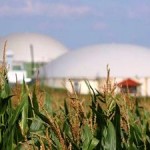Loss of Forests. The most recent available data (2005) indicate that the forest cover of Latin America and the Caribbean continues to diminish, although in some countries rates of deforestation have abated. The accumulated regional loss of forested areas has reached some 24 million hectares between 2000 and 2005. Cattle-raising and agricultural expansion are the principal threats to forests in the continental tropical countries, while the expansion of infrastructure for urbanization and tourism are the major causes of deforestation in the island regions.
Some Relevant Facts
- 35% of the population of Latin America and the Caribbean (189 million people) are poor, and 14% live in extreme poverty.
- By 2010, 79% of the region’s population (some 470.5 million people) will be concentrated in urban areas and only 21% in rural areas.
- The demand for water in Latin America and the Caribbean has increased by 76% (from 150 to 264.5 km3/year between 1990 and 2004) as a result of demographic growth.
- The economic losses accumulated from extreme weather events in the region reached a value of US$ 81 billion for the period 1970-2008.
- For 2006, investment in infrastructure and development was around US$ 18 billion, 60% more than in 1997, and representing about 2% of the total world investment in this sector.
- Public expenditure on the environment as a percentage of GDP for 2005 made up 0.3% of GDP in Mexico, 0.06% in Brazil, and between 0.01% and 0.05% of GDP in Argentina, Belize, Chile, Colombia, and Uruguay. In the member countries of the OECD, it accounted for between 1% and 2% of GDP.
- It is estimated that the losses stemming from desertification for 11 countries in the region are as high as US$ 27.525 billion.
- Calculations suggest that the total extent of protected areas in LAC increased from 303.3 million hectares in 1995 to more than 500 million in 2007.
- Five of the 20 countries with the most endangered animal species, and 7 of the 20 with the greatest number of endangered plants, are found in LAC.
- In Latin America, 86% of wastewater arrives untreated into rivers and oceans; in the Caribbean this figure may be as high as 90%.
- More than 100 million people live in urban areas that do not meet minimum standards of environmental quality.
- Although probably underestimated, the total calculated value of what the region’s coastal ecosystems provide comes to US$ 6.48 million a year.
- An estimated 31% of the 35 million cubic kilometers of freshwater resources of the planet are found in the region.
- There are around 50 million persons in the region who lack access to potable water, even though the coverage of this service reaches 80% of the residents.
- As a consequence of climate change, by 2020, between 12 and 81 million people will be affected by the increased water shortage.
Sources: ECLAC: 2007 a, 2008, 2009), Ricyt (2008), Arnell (2004), Martinez and others (2007), NSI (2004); PAHO (2005), UNEP (2007), IUCN (2008a), United Nations (2010)
Degradation of Marine Ecosystems and Coastal Areas. The report emphasizes the dependence, at the regional level, of these ecosystems, which contribute to human welfare through the provision of different types of services including fishing and tourism. However, over-exploitation of aquatic resources, erosion and pollution from land-based sources, among other things, have generated the degradation of coral reefs and seagrasses and threatens the main source of income for many Caribbean countries.
Environmental Impacts from Mining and Hydrocarbon Extraction. Exploitation of resources such as copper, coal, nickel, gold, silver, or sand, and of hydrocarbons represents an important source of income for some countries. Nonetheless, these practices affect the reserves of the minerals which impact other natural resources (water, forests, and soils) and ecosystems, causing high environmental costs.
Rapid Urbanization. The environmental situation of cities, especially large urban areas, is of great concern, the study emphasizes. The absence of land-use planning, unplanned land-use changes, air and water pollution, or a greater vulnerability to climatic events and natural extremes are some of the consequences of the accelerated, unplanned urban growth experienced by the region in recent decades.
Instruments for Action. Diverse innovative practices implemented in Latin America and the Caribbean, as well as in other places around the world, show some of the lines of action that will permit the countries of the region to achieve better management and environmental sustainability. Among other measures, the third report, “Perspectives on the Environment: Latin America and the Caribbean GEO LAC 3” highlights the following:
- Apply an ecological focus and land-use planning in rural and urban development policies;
- Integrate an ecosystem focus into environmental policy and, in corresponding measure, into sectoral policies;
- Implement payments for environmental services and green enterprises;
- Improve the organization and management of protected areas, biological corridors, and coastal areas;
- Encourage sustainable tourism;
- Increase rates of certified forest management and community-based forest management;
- Strengthen the administration and management policies for watersheds;
- Promote the development of renewable sources of energy;
- Demand the sustainable management of extractive activities;
- Increase policies and fiscal incentives that promote sustainable practices and patterns of production and consumption;
- Strengthen and adjust environmental regulations;
- Promote sustainable consumption.
Structure of the Report
The third report is comprised of five chapters. The first describes the main driving forces and pressures demographic changes, the demand for raw materials and commerce, growing globalization, climate change, technological development, and socio-political and institutional aspects that cause environmental change that affects Latin America and the Caribbean.
Chapter 2 analyzes the situation of the state of the environment, while the third chapter evaluates the relationships and associations between environmental changes and human well-being. The fourth chapter presents four socio-economic and environmental scenarios that can facilitate decision-makers to adopt positive action in terms of mitigation and adaptation in the face of environmental challenges.
The last chapter describes the tendencies that have characterized environmental policy in the region and the challenges that must be met to assure their contribution to a paradigm shift toward development that favors economic growth, the conservation of natural and cultural heritage, and the sustainable use of natural resources.
The study “Latin America and the Caribbean: Environment Outlook GEO LAC 3” is a contribution of UNEP to promote improvements in human well-being, and to add to the debate around the concept of environmental sustainability in a changing and evolving world.
The document is now available on the UNEP website: http://www.pnuma.org/geo/geoalc3
Source: UNEP Press Release dated July 14, 2010.













